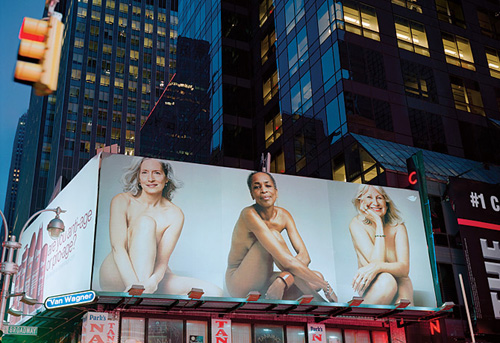
|
| The previous modes of visual analysis have all been beneficial in their application to visual evidence, working from inside the material parameters of the text. Semiotics and discourse analysis I illustrated the viewer-subject relations, ideologies and cohesive discourse found inside the ProAge campaign's print advertisements. Psychoanalysis allowed us to gain a deeper social understanding of viewer-subject relations, by examining the gendered hegemonic tensions working from within the parameters of the campaign's marketing medium of television. However, in order to depict a more accurate understanding of Dove's ProAge campaign, it is important to shift the analytical emphasis away from the details of individual images and towards the production and application processes of the institutional apparatus and technologies that surround them (Rose, 175/177). The medium of billboard advertising is a third approach of the ProAge campaign that is highly influential in reaching consumer audiences. While the ProAge print ads are circulated amongst voluntary magazine readers of relatively target-specific audiences, the billboard ads are similar in physical layout and content but reach a much wider range of audiences who are both voluntary and involuntary viewers. The following image represents a real-life billboard that recently existed in the highly public space of New York City's Times Square. For viewers who are even vaguely familiar with American culture, Times Square is an epicenter for diversity, with streets congested by an international flow pedestrian traffic. At any given time of day or night, the street-blocks of Times Square are filled with a diversely populated range of both national and international visitors. It is logical then, that by placing a two-fold ProAge billboard in this location, the subject matter will be viewed by a vast spectrum of audiences, reaching people who generally exist far outside the campaign's natural reach of advertising. |

